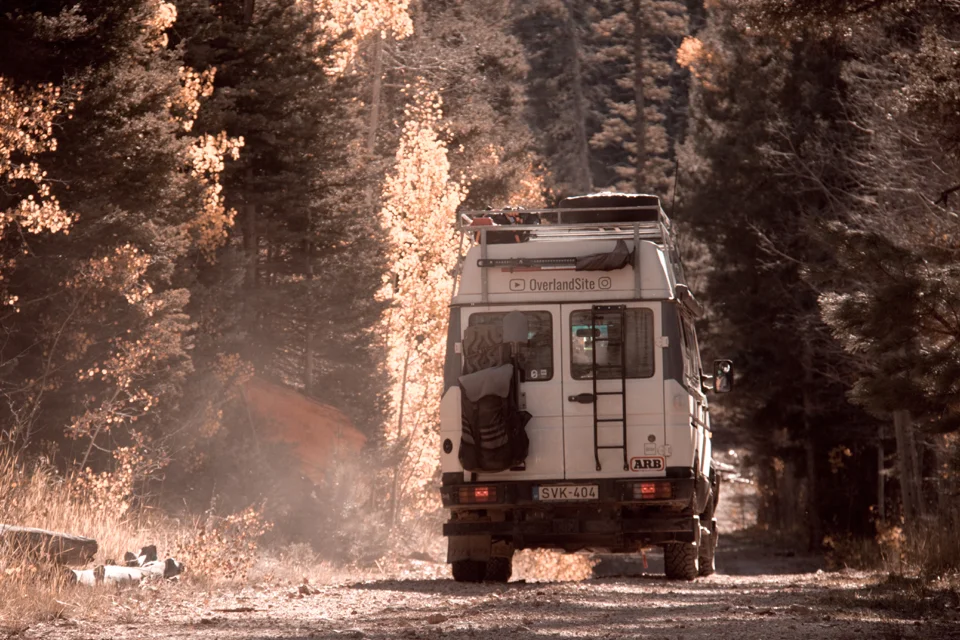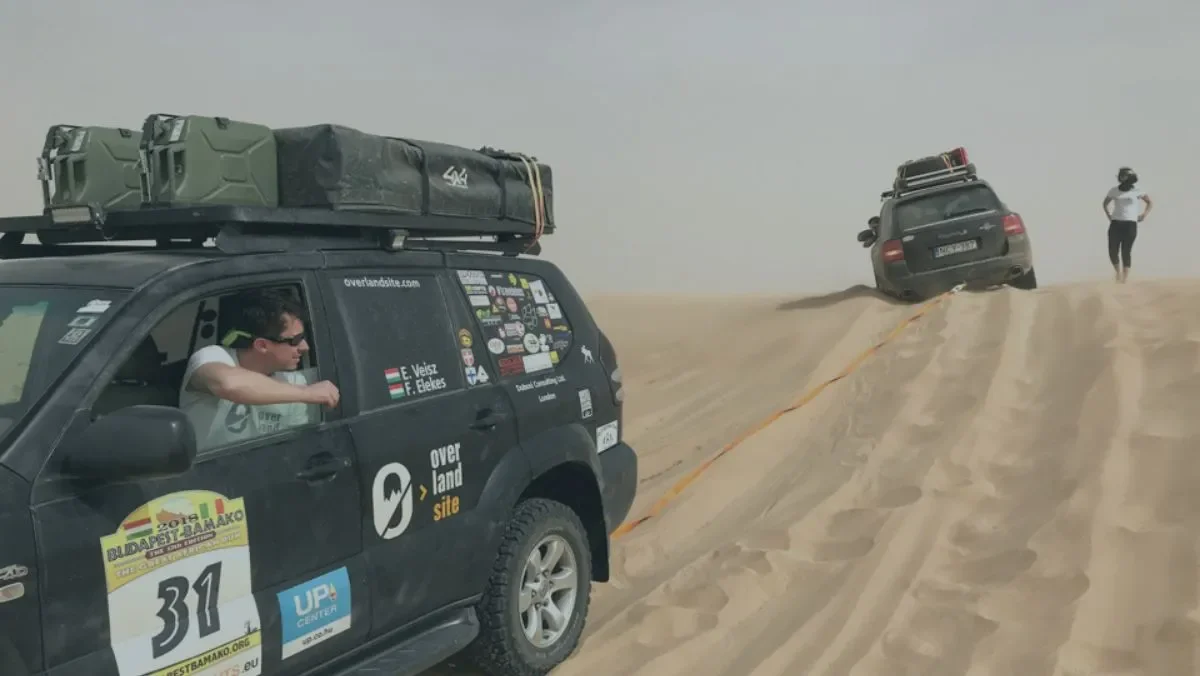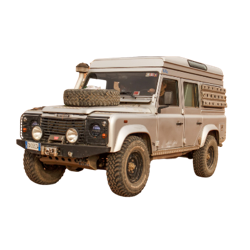For many, using a strap to tow a broken down vehicle or releasing one that stuck is standard procedure.
What is not standard would be knowing that these jobs will require different equipment to get the job done safely and without damage to the vehicles involved.
What follows is a closer look at how to use a tow strap, along with when not to use one. This will be followed by a section examining how to use a recovery strap, with a look at when they should not be used as well.
We will finish with a recap that will summarize this information at a glance so you can get back out on, or off, the road.
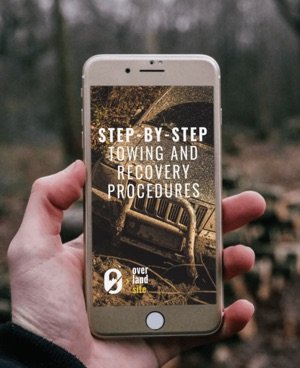

Download our STEP-BY-STEP procedures both for towing and recovering a vehicle so it's always handy when you end up in a tricky situation
Enter your email below to sign up to our newsletter and to download this DETAILED GUIDE!
YOUR PRIVACY IS PROTECTED
How To Use A Tow Strap
Probably the most common strap sold in stores and online are tow straps.
These products might be advertised or described as “recovery” ropes, but there are differences between a tow strap vs snatch strap.
Materials used
A tow strap will be made from cheaper materials that do not stretch or have very little elasticity. They can be made from Dacron, Polyester, Polypropylene, or similar materials.
Using such materials often allows the manufacturer to offer these straps at an economical price.
Little to no stretching is ideal for towing a vehicle. You need consistent pressure on the strap to move the vehicle being towed without causing sudden jerks.
A lack of play in the strap also provides more control, which is needed as you drive a towed vehicle behind the vehicle doing the pulling.
Metal hooks on each end
Many of these products are sold with metal hooks attached to each end of the lead.
These hooks can be dangerous when used to tow a vehicle as they can break free from the connection point and fly through the air.
You can imagine the damage that a metal hook can cause to a vehicle, little alone a person. For this reason alone, more tow straps are hitting the market without metal hooks, making use of the hoop design that is found on recovery straps instead.
making use of the hoop design that is found on recovery straps like the ARB recovery strap instead.
While you can use these hooks when towing a vehicle with consistent pressure on the strap, never use a strap with hooks for recovery. If possible, use towing straps without hooks for towing your vehicle as well.
If you will use metal hooks on your towing straps, find products that verify the strength of the metals used. You want to use hooks that can handle the weight being towed without bending or breaking while in use.
Towing strap rating
For the purposes of towing a vehicle, the strap being used needs to have a pull rating greater than the weight of the vehicle that you are towing at minimum.
Of course, the higher the rating over that weight, the greater the safety. For that reason, it is recommended that you use a towing strap rated at three times your vehicle’s weight.

Using towing straps to recover vehicles
Recovering a vehicle from mud, rocks, or sand will require you to apply quick kinetic force to unlodge it.
Using a towing strap that has no elasticity will not only damage the strap and/or hooks, but it will also likely cause damage to the points you connected the strap onto.
There is an increased chance that the strap will break, causing damage to one or both vehicles from the flying strap. Finally, there have been many documented instances where a person was injured or killed by a towing strap or metal hooks that snap and fly through the air.
One exception to this rule is when you try to recover a vehicle that is overturned. In this case, you will need a strap that offers no stretch as you attempt to turn the vehicle right side up, like the ARB winch extension strap.
In all other cases, do not use a towing rope or winch extension strap for recovery attempts.
Towing procedure
Step One
Keep your towing strap in good condition. Before you hit the road, make sure that your strap is free of damage such as fraying, cuts, or weakened fibers and stitching.
Keep the strap clean between trips, removing any dirt, and letting the strap dry if it becomes wet.
Inspect it for damage caused by rocks or other debris on the ground, as well as damage to the hooks or loops caused by the towing points on the vehicles.
Make sure that it is stored away from direct sunlight to avoid UV damage and keep it free from knots or pinches that would weaken the materials over time.
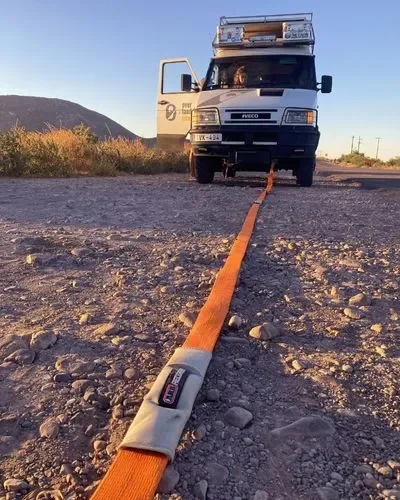
Step Two
Lay the towing strap between the vehicles. Make sure you have enough strap before connecting it to the vehicles (if not, move the working vehicle closer).
Make sure the strap does not have any knots or kinks in it as you place it on the ground. Clear the area of any debris that could damage the strap as it is being pulled tight.
Make sure to read the section on ‘Using recovery straps for towing vehicles‘
Step Three
Attach the towing strap to the vehicle that will be towing. Refer to the vehicle owner’s manual to locate the points you can safely attach the towing strap loops or hooks onto.
Follow the instructions from the strap manufacturer for additional tips for secure attachment and safety.
Winch guides you may be interested in:
Step Four
Connect the other end of the towing strap to the vehicle that is being towed. As mentioned in the previous step, refer to the strap manufacturer instructions for secure and safe placement of the towing strap.
Refer to your vehicle owner’s manual to locate the connection points used for towing the vehicle without causing damage or safety concerns.

Step Five
Prepare the vehicles and towing strap for towing. Place the towed vehicle into neutral gear so that it can be moved once pulling begins.
Slowly pull the towing vehicle forward to remove slack in the towing strap. Once the strap is tight it will begin to tow the disabled vehicle.
The towed car or truck now needs careful control applied to the brake so that the strap stays as tight as possible to prevent jerking as the vehicles move down the road.
They also need to keep the brake off when possible to reduce the resistance that will cause unnecessary stress on the towing strap while it is in use.
Don’t forget to use hazard signals, signs, and make sure to follow any local ordinances that involve towing disabled vehicles.
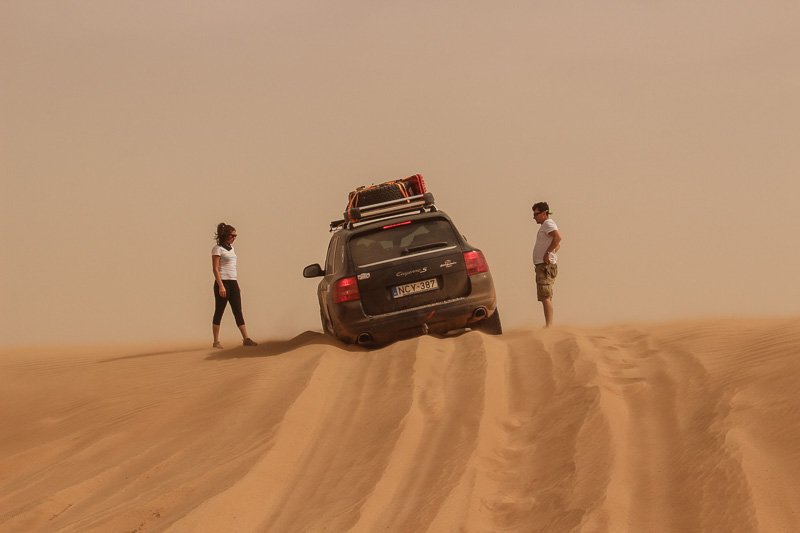
How To Use A Recovery Strap
You may have to do a bit more research to make sure that the “recovery” strap you are looking at is actually designed for recovery, and not simply a towing strap under this name.
You will pay more money for it, but it is designed to help recover your vehicle once it is truly stuck.
ARB recovery straps are one of the most common and reliable brands on the market.
Materials used
True recovery straps use more expensive materials in their construction that allow it to stretch and fall back into place. The material used in these products is nylon.
This material can stretch anywhere from 2 through 30-percent, depending upon the quality used and the width of the strap itself.
Stretching is crucial for a recovery strap, as this action helps to store kinetic energy and release it quickly to help pull a vehicle out of its current position.
The elasticity allows the towing vehicle to move beyond the length of the strap, stretching it and building energy.
Once the strap reaches its furthest point, the energy is released as the strap moves back towards its original length.
That motion is what transfers to the stuck vehicle, helping to move it out of the mud, sand, etc. that it is currently stuck in.
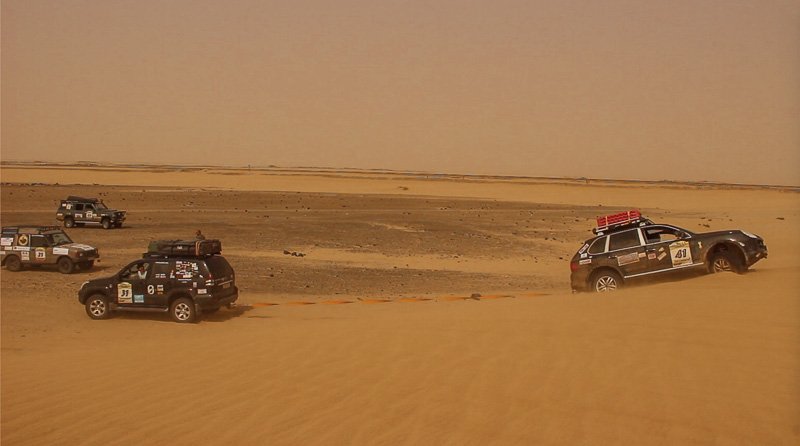
Loops instead of hooks
You will not find a true recovery strap with hooks attached to it, and any product with hooks is a towing strap (even if it is called a “recovery” strap).
These products are not intended to be used with hooks as they become dangerous projectiles if they slip and fly through the air. Recovery straps use loops that are sewn into each end instead of metal hooks. ARB recovery straps, for example, use a unique double-layered reinforced eyelet design for added strength and durability.
Never attach metal hooks to your recovery strap and do not use a towing strap connected to a recovery strap. There are plenty of examples of people being severely injured, or even killed, by flying straps with hooks on them.
Recovery strap rating
Due to the forces generated with stretching the nylon fibers, a recovery strap needs a higher safety rating than a towing strap would for the same vehicle.
Best recovery straps should be rated for three times your vehicle’s weight. This can be calculated by the width of the strap, with one inch equaling 10,000 pounds.
For example, a three-inch strap is rated for 30,000 pounds in weight.
You do not want to go far over the needed weight, however. As the strap gets thicker, it loses the elasticity that is critical for its function. ARB recovery straps, for instance, are specially designed to provide optimal stretch and recovery performance.
If the strap is rated too high compared to your truck’s weight, it will act more like a towing strap instead of a recovery strap, causing sudden jerking motions instead of the spring-release from a stretched strap.
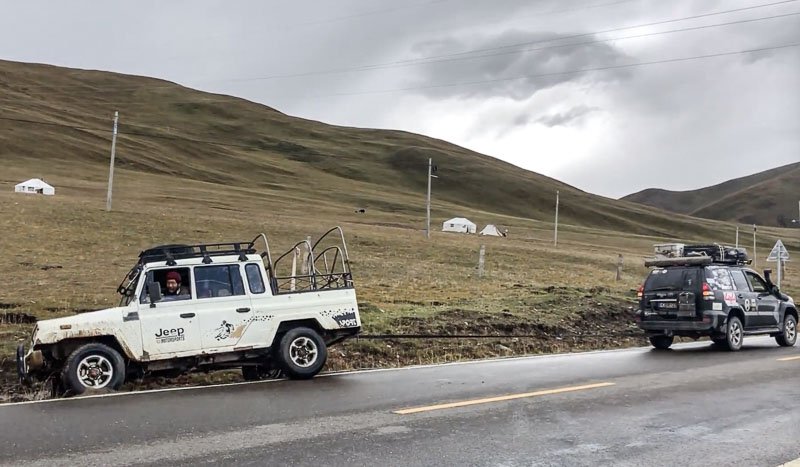
Using recovery straps for towing vehicles
While some manufacturers claim their recovery straps can tow effectively, it is recommended that you avoid using a recovery strap to tow a car or truck.
The elastic nature of the nylon fibers will provide less control as the vehicles move, making the towing process more complex for both drivers as they compensate for this.
Having said that, the advantage of using a snatch strap like the ARB recovery strap is that the elastic nature of a recovery strap will put less strain on the tow/recovery points of your vehicle, and on the vehicle itself as well. So if you’re experienced, using a snatch strap is not a bad idea.
Using coverings on the strap
A great way to limit the possible hazard of flying straps if they snap is to cover them. You can use air dampeners that you can fill with sand or dirt that weigh down the line and connect to it.
You can also use a tarp or other materials in a pinch. By placing one of these a few feet from each end will help to hold the strap down if it breaks free from the vehicle it is near.
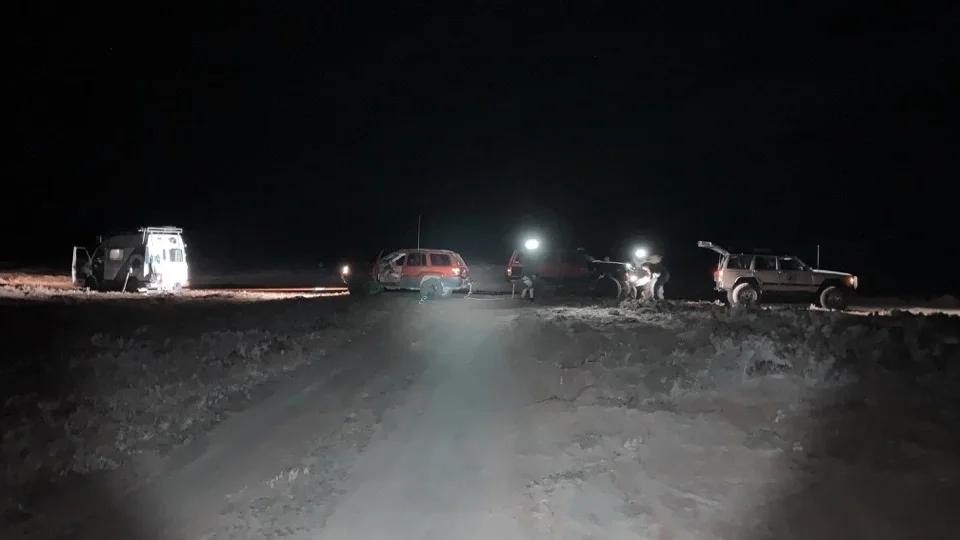
Both our winch ARB extension strap and our ARB snatch recovery strap was needed along with three Jeeps linked together in order to get us out from a very bad bogged situation in Baja
Recovery procedure
Step One
Keep your recovery strap in good condition. Just like with a towing strap, you want to inspect your strap before a trip.
Look for cuts, rips, or damaged fibers that will prevent the nylon from working properly. Let it dry out if wet and keep it free from dirt and grime.
When preparing for deployment, clear the area from any debris that could cause damage to the strap or that might be flung into the air by the strap’s movement.
Store your recovery strap away from sunlight to protect it from UV damage, and avoid knots or kinks that may weaken the nylon fibers.
Step Two
Place the strap between the vehicles. Make sure you have enough to form an “s” shape on the ground between the trucks.
That will allow the person in the stuck truck to know when the strap is about to stretch into position.
Verify that the strap is flat and does not have any knots or kinks in it that can cause problems once it is stretched.
Step Three
Attach the strap to the moving vehicle. Do not connect to a tow hitch. Use points on the vehicle designed for the loads experienced during recovery.
Consider connecting to multiple points to lessen the stress on one area. Refer to both the owner’s manual as well as the snatch strap instructions for proper attachment.
Step Four
Connect to the vehicle being recovered. Follow the procedures listed above. Refer to the truck owner’s manual and the recovery strap instructions for proper attachment.
Step Five
Prepare for vehicle recovery. The key to using a recovery strap correctly will be to build-up energy in the strap by moving the lead truck forward more aggressively than you would with a towing cable.
You want to make sure that you are still moving forward slowly so you do not cause a sudden jerking motion that could snap the recovery strap.
Use the low gear for greater torque on the lead vehicle, and perhaps one gear higher for the vehicle being recovered.
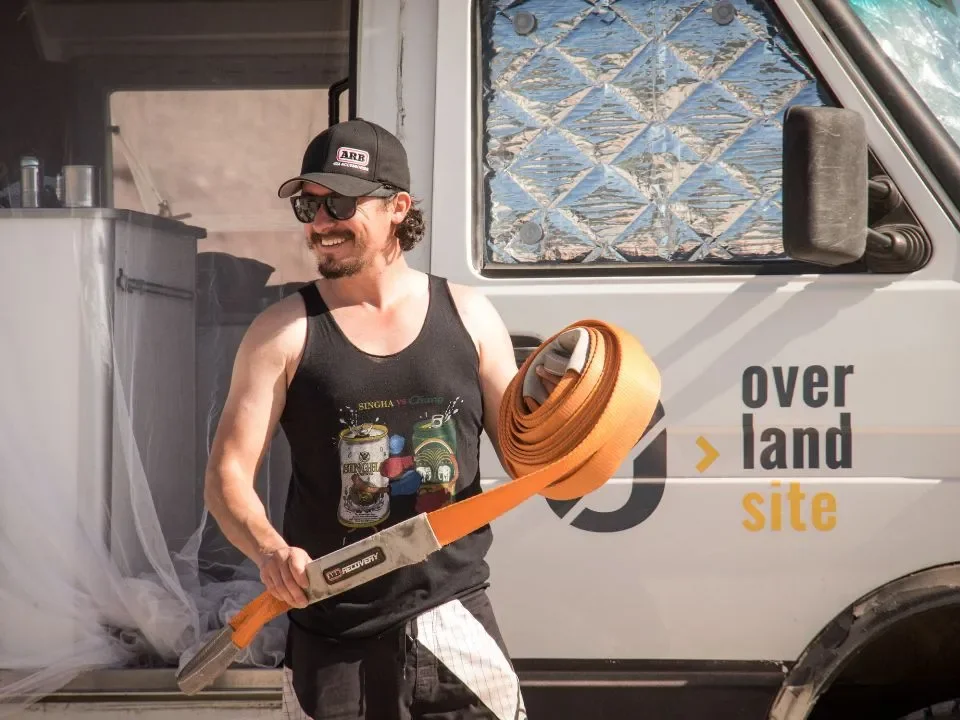
Use The Right Strap For The Job
Just remember that there are differences and uses when comparing a tow strap vs recovery strap. Towing straps often have metal hooks and lack elasticity.
That allows them to supply consistent pressure that is needed for towing a moving vehicle. Conversely, a recovery strap like the ARB recovery strap uses loops to connect to vehicles and will stretch to supply the energy needed to remove a truck from a stuck position.
Don’t use a tow strap for recovery or a recovery strap for towing (with the above mentioned exceptions!).
Using the proper equipment for the job will make it easier while increasing safety and preventing damage.
The references to ARB recovery products in this article are no coincidence. No secret that we’ve partnered up with ARB to test and review their products over a very long and hard adventure, driving the Pan American Highway. So far we are extremely happy with their products, but here are some concrete reasons why ARB is a good choice for overlanding:
- Durability: ARB recovery straps are made from high-quality nylon materials that are designed to withstand the rigors of off-roading and vehicle recovery.
- Elasticity: ARB recovery snatch straps have the ability to stretch, which is crucial for storing kinetic energy and releasing it quickly to help pull a vehicle out of its current position.
- Safety: ARB recovery straps have a higher safety rating than straps from other brands, which means they can handle the weight of the vehicle being recovered and will not break easily.
- Loops instead of hooks: ARB recovery straps use loops that are sewn into each end instead of metal hooks. This is safer because it eliminates the risk of metal hooks breaking free and flying through the air.
- Versatility: ARB recovery straps can be used in a variety of recovery situations, such as mud, rocks, or sand.
- Brand reputation: ARB is a well-known and reputable brand in the off-roading and vehicle recovery industry.
